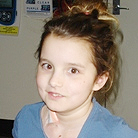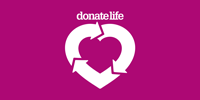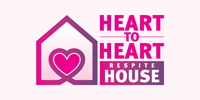Opinion: Social distancing
17-Mar-2020
We’ve been getting a lot of enquiries and concern from our transplant community about COVID-19.
Louisa Walsh is a former HLTTV President and is currently choosing to socially distance as a way of reducing her risk of contact with the virus.
She’s agreed to share her approach with the community. Louisa is not an expert in this field, and her experience and decisions are not intended as a set of rules. Your circumstances may also be different, which will lead you to making different decisions and implementing different approaches. But we wanted to give you some ideas for how you might implement social distancing that you could discuss with your treating team. Louisa has also provided some useful links that have helped her to decide on her approach. Over to you, Louisa…
Hi everyone! I know this is a difficult and uncertain time for the whole community, and people – like transplant recipients - who are in high risk groups for complications from respiratory infections in particular. I’m definitely feeling it, and I’ve made some decisions to try and reduce the number of people I come into contact with as a way of reducing my risk of exposure to COVID-19 (coronavirus). I am not an expert in this at all, and my approach may not work for you. But perhaps if we – as a community – share what we are doing, we can all come up with some different ways of staying safe and well together.
First of all I have to say that I’m really lucky because I am able to work from home, and now my workplace has effectively shut down and is encouraging everyone to work from home unless it is absolutely essential and unavoidable to be in at the university.
My partner’s workplace is taking the same approach. So that makes it easier for us to distance ourselves from other people. I appreciate that is a very privileged position, that not everyone is in. Also, we don’t have kids. So we’re not having to make difficult decisions about school, or having to managing children at home while we work from home.
What I’m now doing is called “social distancing”. The idea behind social distancing is to minimise the number of people you contact. This reduces your chance of catching the virus just because you’re not seeing, or physically touching, as many people. You’re also not going to as many places where someone with the virus may have been and coughed on, sneezed on, or touched surfaces that you later touch.
It is important to know that social distancing is not just for people who are at high risk of developing complications of the virus. The more people there are who are actively trying to reduce their contact with others in the community, the slower the virus can spread.
As transplant recipients, or the people who live with transplant recipients, we might be motivated to reduce our contact with loved ones because of the direct threat of the virus to our health. But anyone in the community can practice social distancing to reduce the rate of spread and protect vulnerable people they don’t even know. The more people who take steps to socially distance, the better the outcomes for the whole community.
Finally, there is no “perfect” when it comes to social distancing. But small changes in usual behaviour, if made across the community, can have big outcomes in slowing the spread of the virus.
So with all that background out of the way, here’s my approach:
- My partner and I are working from home mainly. I am working from home all the time, he is working from home unless he really has to go into the office (no more than two times per week).
- We are avoiding public transport and are driving, walking or riding bikes to places instead. If public transport is unavoidable (my partner doesn’t drive, so sometimes it is unavoidable for him), then we are only taking public transport outside of peak times.
- No one comes inside the house apart from my partner and I unless absolutely unavoidable. I had a lovely chat with a friend the other day who came over and stood on the other side of our front fence while I sat on our front lawn.
- We are not going out to events, cafes, restaurants, friends houses etc, and we are preparing all our own food.
- If/when anyone comes into the house (including my partner and I!) we wash our hands for 20-25 seconds minimum with soap and water before we do or touch anything else.
- My partner is the only person I touch. No hugs, handshakes, physical contact with anyone else. The sports that I play have postponed their seasons at the moment, and my friends and I are practicing our curtseys, bows, Namastes, salutes etc as greetings.
- If seeing people other than my partner I am trying to maintain a distance of 3m (ideally) or 1.5m (minimum). This is because cough or sneeze droplets can travel up to 1.5m. I am trying to only see other people outside.
- I am arranging telephone calls and videoconferencing catch ups with work and friends. Friends-wise we’re talking about doing online dance practice together, playing group video games, and even doing videoconference karaoke. We’re getting creative!
- I am minimising trips to potentially crowded places, and if I have to go out (to the hospital, to the supermarket etc) I’m trying to go at quieter times. When out and about I’m trying to regularly wash my hands with soap and water, or hand gel (but that is in very short supply at our house – thanks panic buyers!), and I’m avoiding touching my face if my hands haven’t just been washed. When out I’m also trying to avoid touching surfaces with my hands (like handrails on stairs and escalators, lift buttons, road crossing buttons, shopping trolleys etc). Elbows are great button pressers!
- For all medical appointments I am requesting telehealth (phone or video consult rather than face to face). If that is not possible, and the appointment is not urgent, then I am postponing. If it is urgent then I am being very careful about hand washing, surface-touching and keeping my distance from others while at the hospital.
- I have two weeks supply of food and around two-month’s supply of medication at home. The two-month supply of medication is just another way of avoiding too many trips to the hospital.
- I am still walking my dogs, riding my bike, shooting hoops in the park, gardening, and doing other outdoor exercise.
If my partner has a known exposure to COVID-19 and is instructed to self-isolate, or he starts to get sick with anything, we have a plan that he’ll move out (we haven’t quite worked out where yet though…). If I get sick with anything my partner will stay at home.
Here are some links I’ve found useful. Please just not that some of the steps I’ve taken have gone beyond the recommendations in these links – that is because I’ve decided to be extra cautious:
Victorian DHHS daily updates: https://www.dhhs.vic.gov.au/co...
Victorian DHHS transmission reduction measures: https://www.dhhs.vic.gov.au/co...-covid-19-transmission-reduction-measures
Washington Post: https://www.washingtonpost.com...
Dr Jen Gunter: https://www.nytimes.com/2020/0...
NPR: https://www.npr.org/sections/h...
So that’s the run-down of what I’m doing.
Are you taking any steps around social distancing and minimising your contact with others at the moment? Check the HLTTV Facebook page/group and share so we can learn from each other!
Stay safe and well everyone. I’m sure as a community we can support each other and get through this challenging time.




